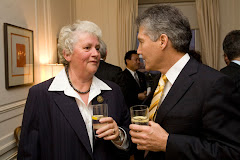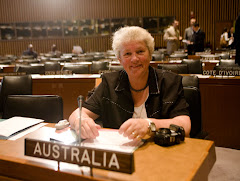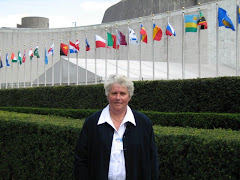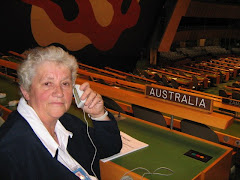
Last night we camped at a place called Robe on the Limestone Coast of South Australia which, aside from
the fierce weather we drove through to get there was a great place to stop. But I’m getting ahead of myself.
We left Gawler to head to Murray Bridge where we intended to stop for the night but had a change of plans. I’ve got to say that everything I saw in South Au
stralia was impressive. SA does tourism far better than NSW.
It took us about two hour
s of driving through gale force winds and rain along the coast road but the Jayco Van was up to the task. No real difficulties were experienced not even any distinctive sense of swaying.
We stayed at a very well appointed caravan park next to what has been described as the lakes. The van park adjoins a beautiful sandstone mansion which is a replica of the west wing of a London house built by a wealthy immigrant last century.
It is presently being used by the Youth Hostels Association people and I would imagine that in summer it would be a very popular destination.
The facilities were very clean and tidy and the two young girls running the park, were very helpful and courteous. We walked into town for dinner at a replica English Pub and it reeked with atmosphere. The huge open fireplace was a welcome refuge from the howling gale outside.
The next morning we set of to Naracoorte on the Princes Highway where the main attraction was the caves and fossils. While the town was not dependent on tourism owing to a large meat works that was the focus of the towns economy, the shopkeepers were concerned at the drop in tourists owing to the price of petrol. Spoke to some Japanese tourists who were travelling around Australia in a Kombi van, they had nothing but praise for the Australian hospitality.
From there to Penola in the heart of the Coonawarra wine growing district. Have to admit that we did visit Wynns Winery, (only to check out the facilities) and to buy that odd bottle of red, for the staff back home.
Being a former tourist officer I could not help but notice the diversion of attractions within the visitors centres themselves, such as promoting the history of the town both as amazingly real life exhibits tied in with an educational theme.
Penola’s traced the local history of the town, especially the role played by Mary McKillop in Australia’s history. By the way petrol consumption has improved considerably, no headwind and able the stick to the speed 90-100kph on a constant basis.
I must not continue to rave about the visitor centres but credit due again to The Mt Gambier Information Centre, our next stop, ample parking very informative staff, and tot
ally run by the local council, (contrary to many councils, they see the benefit of the tourist dollar) their display centred around the ship, the Lady Nelson.
The format was a walk through with interactive displays. The first step took you through the local country side, then the lives of the local aboriginal nation and, then in insight into life on the Lady Nelson. I must say the scene below decks was dark and confined. I had never imagined life on a sailing rig to be like that. I suppose I’ve always had a romanticised view so seeing the replica was quite a shock. Petrol prices still varied from $1.69 - $1.80.
We had some time so we made a spur of the moment decision that rather than staying for the night we would go to Port Fairey in Victoria. We only got as far as Portland where a
gain I was blown away by the visitor centre and what it had to offer the tourist.
Observations? South Australia does tourism exceptionally well. The only down side being the vast distances you have to travel between regions with little relief from the flat plains. But the roads are great, well sign posted and well appointed. NSW could well learn a lesson from them.
Locally, just how much more we could offer our visitors, with the Shoalhaven’s history of boat building, dairying, forestry and rural history
.
Picture top left: The Lady Nelson at Mt Gambier.
Picture below: Talking wine and tourism at Coonawarra.










+and+me.jpg)









